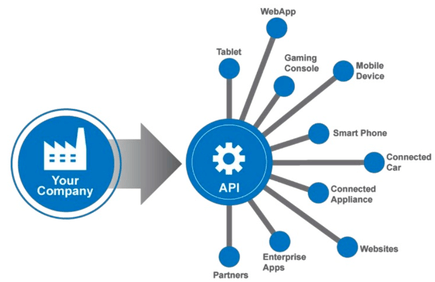What is the full form of APIAPI: Application Programming InterfaceAPI stands for application program interface. A programmer writing an application program can make a request to the Operating System using API (using a graphical user interface or command interface). It is a set of routines, protocols and tools for building software and applications. It may be any type of system like a web-based system, operating system or database System. 
UsageAPI in Procedural languages It specifies a set of Functions and Routines that helps in completing a task. API in object-oriented languages It simply shows how an Objet works in a given Object-Oriented language. It is expressed as a set of classes with an associated list of class Methods. API in libraries and Frameworks It is related to Software libraries and Software Frameworks. API and Protocols It can be the implementation of Protocols. API sharing and reuse via virtual machine Languages running on virtual machines can share an API. API DesignsSeveral principles are used in designing APIs. One method is the concept of information hiding. It works on the principle that software can be divided into modules, each of which has a specified interface. Another is a software architecture which is used to create and maintain high-level software structures. How does an API work?A set of accepted rules that specify how programmes or computers communicate with one another is known as an API. Across an application and the web server, APIs act as an intermediary layer to manage data transit between systems. How an API works is as follows:
While the queries and responses in this procedure are all done through an API, the data transmission will vary based on the web service being used. A user interface is made for humans to use, whereas an API is made for a computer or application to use. Due to their nature as a mediator, APIs naturally provide security because the API endpoint separates the application that consumes the service from the infrastructure that provides it. An API gateway can restrict access to lessen security risks, and API calls typically include authorization credentials to lower the danger of server assaults. Additionally, during the exchange, the data is protected by extra levels of security thanks to HTTP headers, cookies, or query string parameters. Take a look at an API that a payment processing firm provides as an illustration. Users can input their card details on the interface of the app for the e-commerce store. Since the API generates a special identifier specific to this transaction and adds it to the API call to the server, the payment processor does not need access to the customer's bank account. As a result, there is increased protection against potential hacking risks. The necessity of APIsYou can manage existing tools or develop new ones with the aid of an application programming interface while speeding up the procedure. The following are some of the principal advantages of APIs: Enhanced cooperation: The average business uses over 1,200 unconnected cloud applications (the link is external to IBM). Integration is made feasible by APIs, enabling uninterrupted connections between different platforms and programmes. Through this connectivity, businesses can improve teamwork and expedite processes. Many firms would have information silos and a lack of connectivity in the absence of APIs, which would hurt productivity and performance. Easy Innovation: The flexibility of APIs makes innovation easier by enabling companies to connect with new business partners, offer new services to their present market, and ultimately access new markets that have the potential to generate tremendous profits and hasten the digital transformation. For instance, Stripe started as an API with only seven lines of code. Ever since, it has collaborated with many of the top organisations in the world, grown to offer loans and corporate cards, and recently had a valuation of USD 36 billion (link resides outside of IBM). Data monetization: To attract developers to their brand and establish connections with prospective business partners, many firms opt to provide APIs for free, at least initially. Additional Security: As stated earlier, APIs add an additional layer of security between your data and a server. By establishing API gateways to monitor and authenticate traffic, employing tokens, signatures, and Transport Layer Security (TLS) encryption, as well as by engaging in effective API management, developers can further increase API security.
Next TopicFull Form
|
 For Videos Join Our Youtube Channel: Join Now
For Videos Join Our Youtube Channel: Join Now
Feedback
- Send your Feedback to [email protected]
Help Others, Please Share









